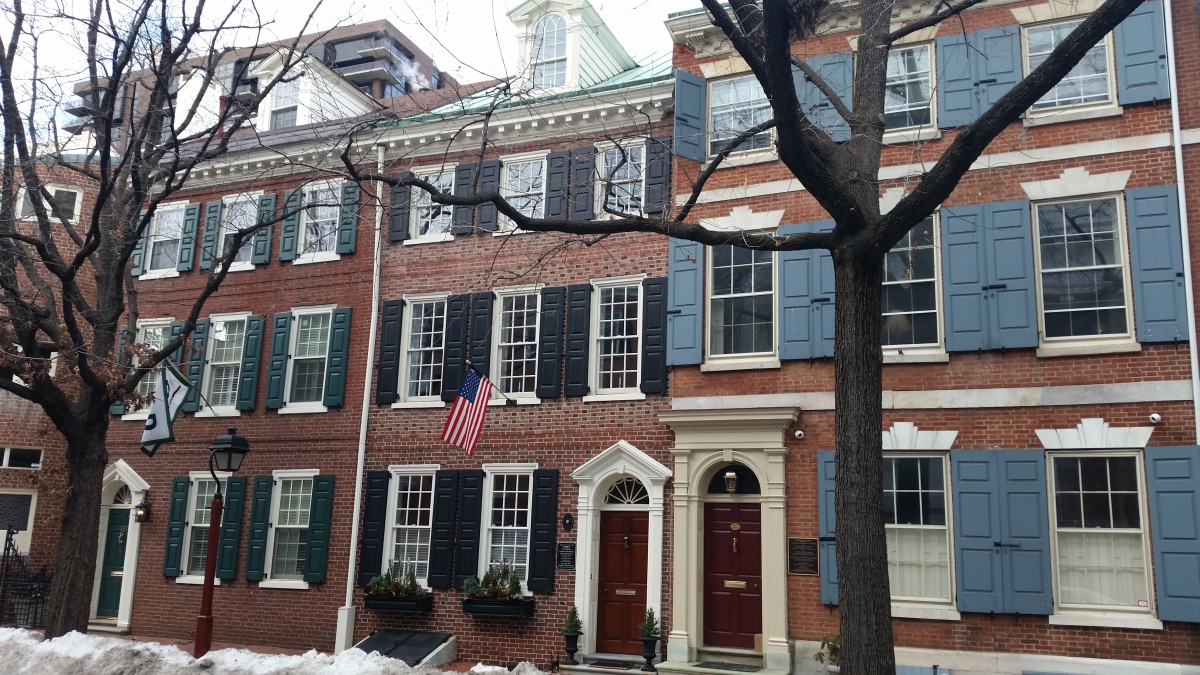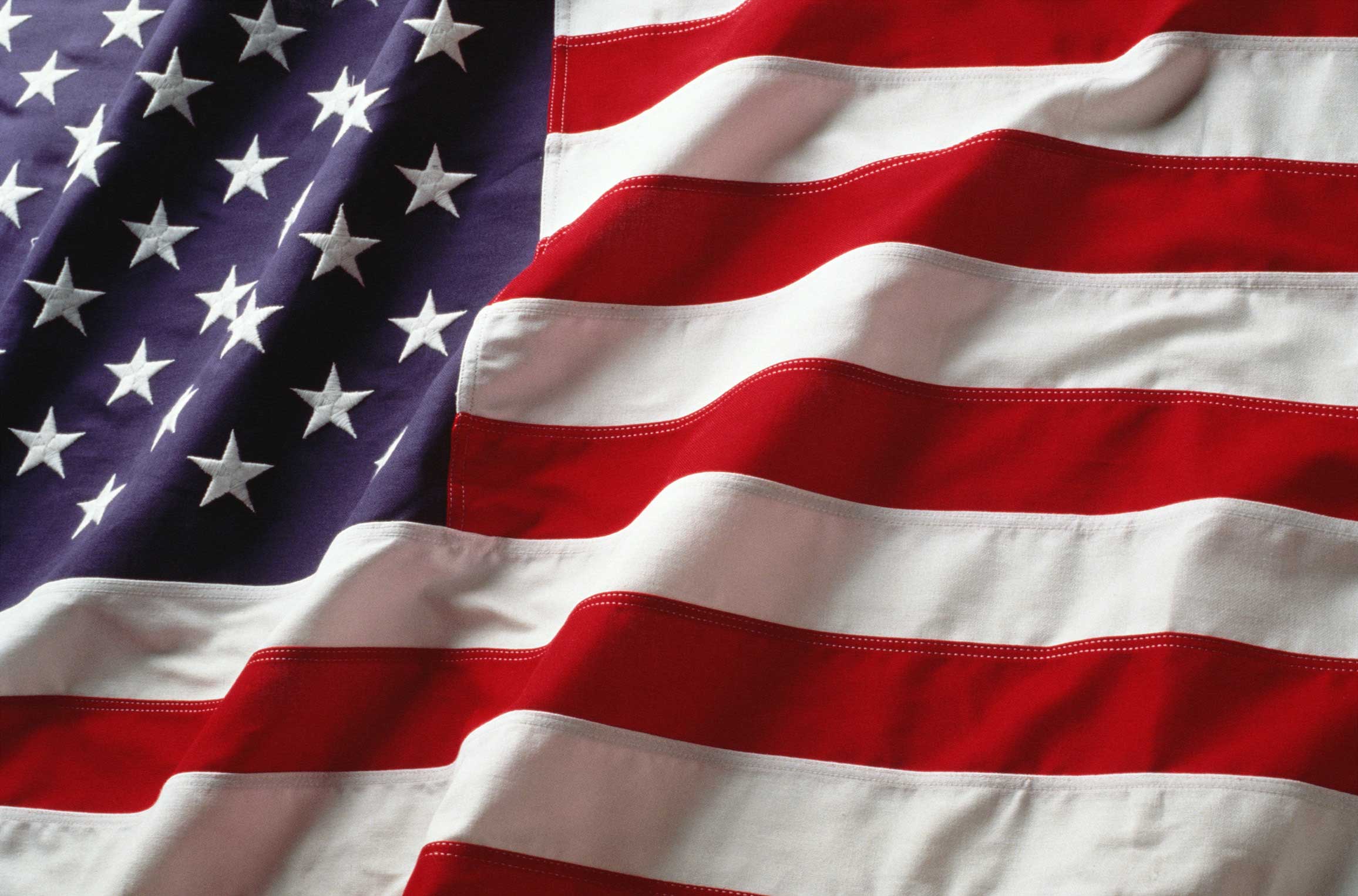Related Posts
Birth: March 16, 1751
Death: June 28, 1836 (age 85)
Colony: Virginia
Occupation: Politician, Statesman
Significance: Signed the United States Constitution (at the age of 36); Known as the "Father of the Constitution"; served as a United States Congressman from Virginia (1789-1797); served as the fifth United States Secretary of State (1801-1809); and served as fourth President of the United States (1809-1817)
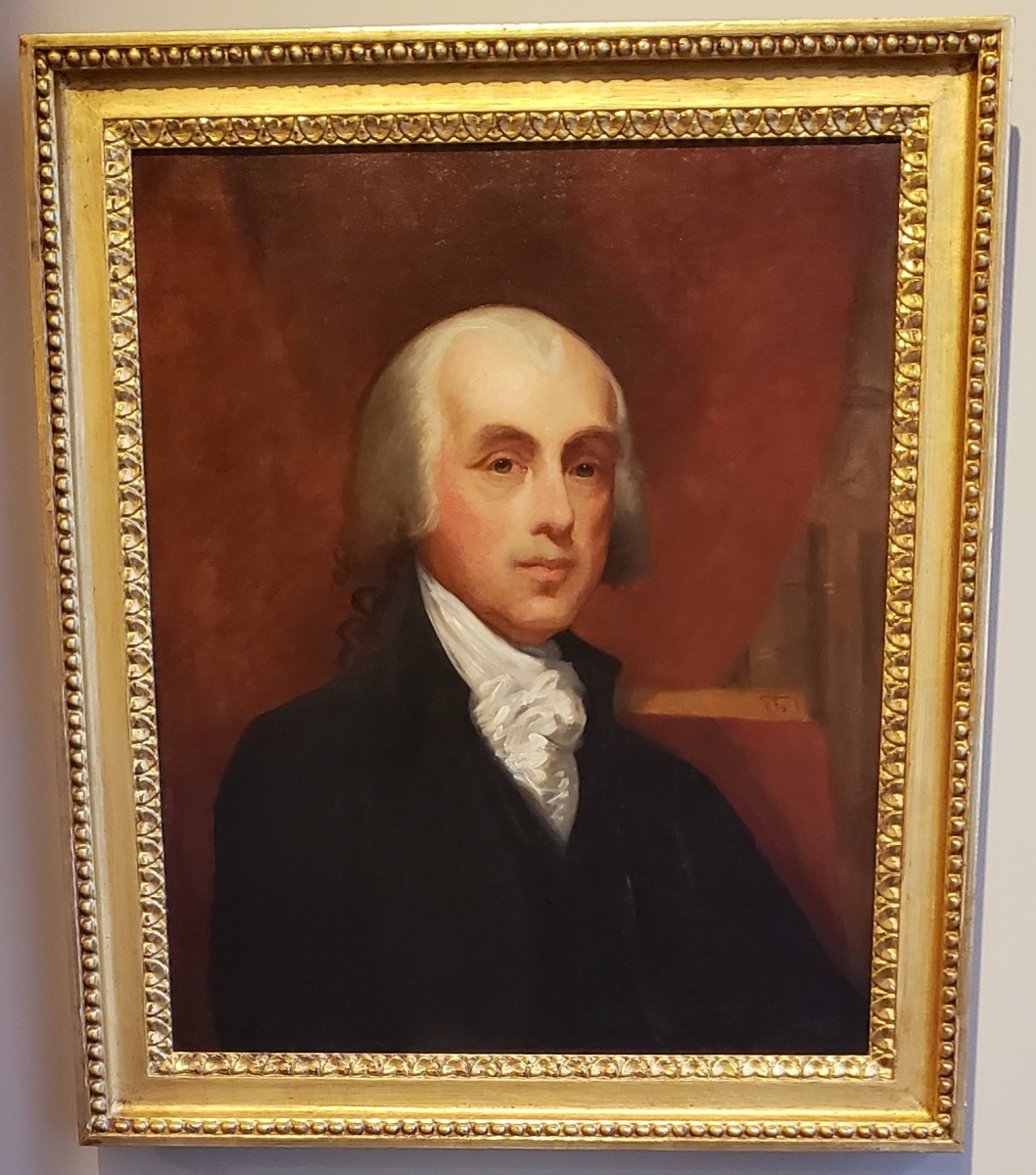
James Madison was a Founding Father of the United States of America. Born in 1751 to a wealthy family of Virginia plantation owners who had lived in Virginia for nearly a century at the time of Madison's birth, Madison was the eldest of twelve children. Madison was privately tutored until at the age of 18 when he left home to attend the College of New Jersey (now
Princeton University.) Madison graduated in 1771, and he returned home to Montpelier where he began to study law on his own. Interestingly, Madison never practiced law since he turned his attention instead to politics.
The American Revolution
When the Revolutionary War broke out near Boston in 1775, Madison was 24 years old, and he was sympathetic to the American Revolutionary cause. Madison was appointed to the local Committee of Safety which supported the Revolutionary War. Madison, who stood at 5'4", served in the local militia, but he was in poor health and never actually participated in any military battles. However, Madison was successful in his political aspirations, and he was elected to the Fifth Virginia Convention and helped to author the Virginia Constitution.
During the Revolutionary War, Madison also served in the Virginia House of Delegates and he was elected to serve in the Council of State, where he worked under Virginia Governor
Thomas Jefferson who would become a lifelong political ally. In 1779, Madison was elected to the
Continental Congress (Congress of the Confederation). While in Congress, Madison advocated for a stronger Federal government and for amendments to the Articles of Confederation that would have granted the Continental Congress additional powers of taxation to raise funds for the new nation.
As the Revolutionary War ended, Madison was elected once more to the Virginia House of Delegates and decided to return home, where he continued to advocate for changes to the
Articles of Confederation from afar. After the Revolutionary War, America’s government under the
Articles of Confederation faced many challenges, and it was afforded little power and authority to address those challenges. As time passed, more Founding Fathers came to Madison’s conclusion that the Articles of Confederation needed to undergo significant changes if it were to hold the new nation together.
In 1786, Madison helped advocate for a meeting to begin discussions regarding desperately needed amendments to the Articles of Confederation. The meeting, dubbed the “Meeting of Commissioners to Remedy Defects of the Federal Government,” met in Annapolis, Maryland and came to be known as the Annapolis Convention. Though the Annapolis Convention was poorly attended, Madison was able to convince the delegates in attendance that the Articles of Confederation were inadequate, and changes needed to be made. It was eventually decided that the delegates would meet in Philadelphia for an official convention with the intention of altering the Articles of Confederation.
Constitutional Convention
Madison had arrived in Philadelphia in April 1787, weeks before the beginning of the
Constitutional Convention. Madison believed that the Articles of Confederation were fundamentally flawed, and it would be best to discard the existing government structure and create a new government from the ground up. Madison quickly began developing the details for his own plan for a new system of American government. Madison quickly gained the support of his fellow Virginians. Madison also shared his work with the Pennsylvania delegates who were already in Philadelphia, and Madison was able to win their support for his plan as well. Before the Constitutional Convention had commenced, the two largest states in the Union -- Virginia and Pennsylvania -- had already united in support of Madison’s Plan which became known as the Virginia Plan. The delegates from Virginia and Pennsylvania represented a powerful voting block that carried enormous sway throughout the Constitutional Convention.
When the rest of the delegates to the Constitutional Convention arrived in Philadelphia, they approved of many of the aspects of the Madison Plan. The Virginia Plan called for three separate branches of government, an Executive Branch headed by a President, a Legislative Branch that consisted of two houses of congress, and a Judicial Branch. These aspects of the Virginia Plan were never seriously challenged in the Constitutional Convention, and one will recognize them as foundational parts of the United States Constitution that provides the system of checks and balances with the organizational structure that still governs the United States to this day.
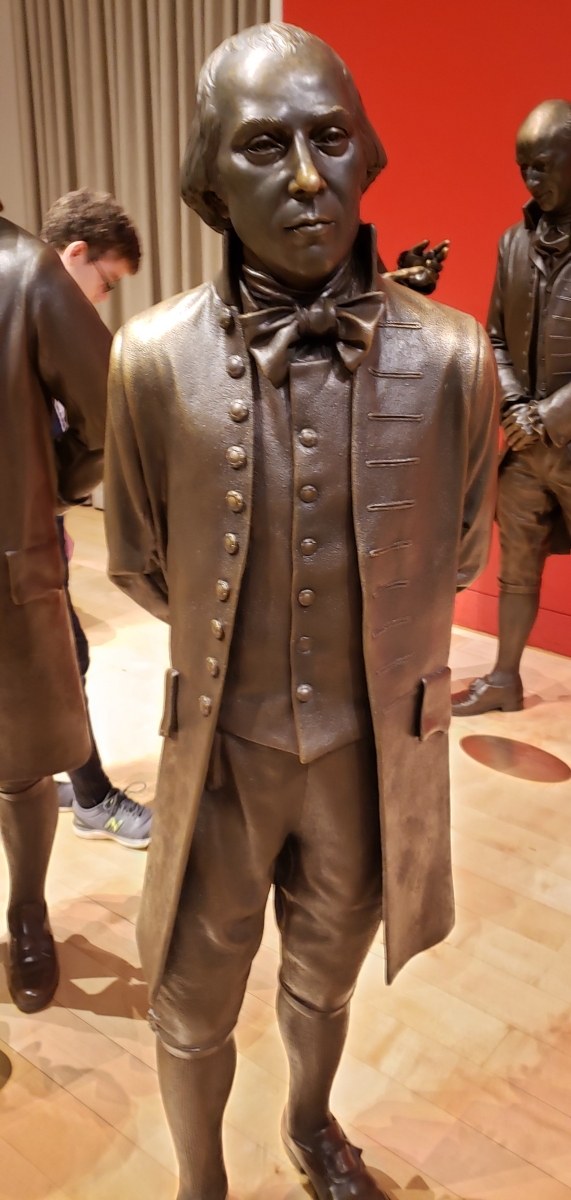
Even without much disagreement on the major aspects of the Virginia Plan, the details as to how the Madison's Virginia Plan would be implemented caused many major disagreements. The aspect of the Virginia Plan that was most controversial was Madison's call for both houses of the Legislative Branch to be appointed proportionally in terms of the states' respective population base, which would give the larger states considerably more governing power, which upset delegates from smaller states.
Subsequent plans were proposed by other delegates, but most were just variations on Madison’s original plan, with subtle attempts to shift power one way or the other. Madison was able to control the conversation at the Constitutional Convention so that his strongest desire, that a new government be created that granted the Federal government more power over the states, never even became a major topic of conversation. Madison’s basic premise was quickly accepted while people focused on arguing about the details of implementing some version of Madison’s plan.
A compromise between the large and small states was proposed by Roger Sherman that would give larger states more power in the United States House of Representatives, but every state equal representation in the United States Senate. This compromise and others proved successful, and the Delegates signed the Constitution of the United States on September 17th, 1787, which today is celebrated as Constitution Day.
Due to his instrumental work at the Constitutional Convention, Madison is often referred to as the “Father of the Constitution,” though Madison himself pushed back against this compliment in his own lifetime, reiterating that in the end, the Constitution of the United States was the result of many Founding Fathers working together.
Ratification of the Constitution and Bill of Rights
Even with the
Constitution of the United States signed, the debate over the future of the American government was far from over. At the conclusion of the
Constitutional Convention, the United States Constitution was taken North to New York City where it was presented to the Congress of the Confederation on September 20, 1787. The Constitution was nothing like what Congress had envisioned when they had approved a convention to make changes to the Articles of Confederation. Instead, presented with an entirely new government, Congress realized how far the Constitutional Convention had exceeded its authority and began to debate whether Madison and other delegates should be censured for their actions. In the end though, Congress decided that the fate of the Constitution was best left to the states, directing the states to each call for ratification conventions and begin the process of deciding whether or not to ratify the new U.S. Constitution.
Initially, participants in the Constitutional Convention believed that it would be best to stay out of the debate over the Constitution, but as negative press of the new U.S. Constitution intensified, numerous Constitutional Convention delegates felt the need to speak out in defense of the Constitution of the United States. Madison joined fellow delegate
Alexander Hamilton and diplomat
John Jay in the authorship of a series of essays being written under the pseudonym "Publius" which became known as The Federalist Papers. A total of 85 essays were written, and although authorship of each essay is not definitively known, it is believed that Hamilton authored 51 of them, Madison wrote 29 and John Jay (who fell ill before he was able to write many essays) wrote 5.
Originally published in newspapers throughout the Colonies, the Federalist Papers were incredibly effective in communicating the intent of the Constitution of the United States to the American people and were a major reason for increased public support for the Constitution. The Federalist Papers remain incredibly important to this day since they represent some of the most important contextual documents for understanding the meaning and intent of the United States Constitution.
The Federalist Papers were a success, and by July 1788, eleven of the thirteen United States had ratified the Constitution of the United States, more than the required nine to make it the new framework for the government of the United States. Preparations for the installation of the new government commenced and by March 4, 1789, the United States Constitution went into effect as the First United States Congress convened in New York City.
Madison himself was among those who were seated within the first United States Congress after he won a seat in the House of Representatives following a difficult election against James Monroe. Once in Congress, Madison had leftover business from the ratification of the Constitution. Although he had succeeded in securing the Constitution's ratification, it still had many opponents and a crusade led by
George Mason for the enshrinement of a Bill of Rights within the Constitution to protect citizens' rights had broad support. Fearing that the Constitution could be dismantled at a second constitutional convention called to resolve these issues, Madison moved quickly to resolve their concerns himself. Reviewing the many proposals to amend the Constitution that were proposed largely by its opponents, Madison culled the list down to twelve amendments.
Madison’s Bill of Rights protected the rights of Americans enabling free speech, a free press, freedom of religion, freedom of assembly, and trials by jury while also restricting the Federal Government and its powers of property seizure and power over the states, among many other rights. Madison’s Bill of Rights was extremely popular and was quickly passed by the states, with the exception of two of the twelve amendments. One of the Amendments that did not pass concerned congressional pay raises and was eventually ratified 202 years after it was proposed and was ratified as the 27th Amendment on May 7, 1992. The other amendment that failed to pass detailed a formula for determining how many representatives each state would receive in the House of Representatives. The rest of Madison’s Bill of Rights were ratified on December 15, 1791, and these became the first ten amendments to the United States Constitution!
Democratic-Republican Party
With George Washington as President, Madison found himself in a position of considerable power as Washington viewed Madison as a trusted advisor and friend. However, during George Washington’s administration, Americans quickly began to align into competing factions, those who approved of the actions of Washington’s administration and those who opposed them. While Washington’s administration was not constructed with a particular ideology in mind and contained individuals with diverse political viewpoints, as time went on, Washington increasingly drifted away from Madison for advice and instead aligned with his Secretary of the Treasury, Alexander Hamilton. Hamilton created a party that became known as the Federalists who were largely concerned with increasing Federal Authority, Financial Policy designed to stimulate America’s largely northern manufacturing economy and a desire for a close relationship with Britain. Madison was one of Hamilton’s primary political opponents and along with Thomas Jefferson, created the competing Democratic-Republican Party in response. The Democratic-Republicans preferred a small Federal government that was more deferential to state’s rights and sided with France over Britain in their European conflict.
While Madison and the Democratic-Republicans supported Washington for a second term as President, they wanted a greater voice within his administration and sought to replace his Federalist Vice President,
John Adams. When those efforts failed, Madison became increasingly critical of Washington’s second term as President. Madison’s breaking point was Washington’s signing of the 1794 Jay Treaty, which looked to avoid a second conflict with the British and strengthened trade relations between the two nations. Madison and other Democratic-Republicans however believed the Treaty was far too deferential to the British, and Madison’s criticisms of the Treaty ruined what remained of Madison’s friendship with Washington.
While in Philadelphia serving in Congress, Madison married widow
Dolley Payne Todd who became one of Madison’s top advisors for the rest of his life. After Washington declined to run for a third term, Madison and the Democratic-Republicans selected Thomas Jefferson as their Presidential nominee whereas the Federalists supported John Adams. Adams won the election, and Madison decided not to return to Congress and moved back to Montpellier with Dolley and their surviving son from her first marriage. Despite being out of politics, Madison nonetheless was a prominent critic of Adams’ administration and a leader of the Democratic Republicans.
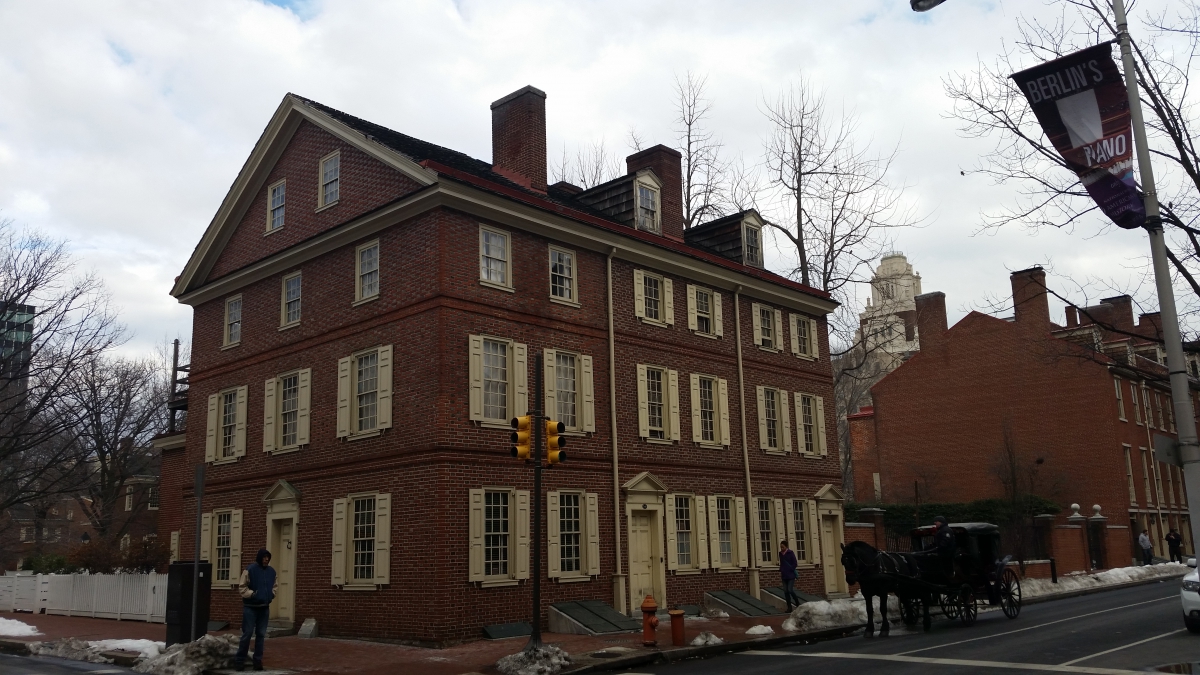
Secretary of State
After Thomas Jefferson won the 1800 Presidential lection, he named Madison his Secretary of State. Madison played an enormous role in Jefferson’s presidency as one of his closest and most trusted advisors. Arguably Madison’s most important moment during this time was his role in acquiring the Louisiana Purchase. Madison traveled to France after he was instructed by Jefferson to secure the purchase of New Orleans, but upon discovering the French were willing to sell the entire Louisiana Territory, Madison negotiated for the sale of the entire Territory which roughly doubled the size of the United States of America and had enormous lasting effects on American foreign policy and the view on western expansion as an American right.
After the British and French began attacking and seizing American merchant vessels, and the British even attempted to enlist American sailors into the British Navy, Madison pushed for Jefferson to support economic sanctions against Britain and France in retaliation. This resulted in numerous acts designed to prevent trade with the British and French in an attempt to gain the upper hand in negotiations with both countries. These acts however were unpopular in America and served to increase tensions between America against Britain and France.
President of the United States
After Jefferson declined to run for a third term as President, there was intense competition within the Democratic-Republican Party to determine who should be nominated as his successor. Madison was however eventually chosen and had a much easier time in the general election since the Federalist Party had been weakened considerably. Madison easily beat Federalist candidate Charles C. Pinckney with over 64% of the vote and became the nation’s fourth President.
The War of 1812
Madison’s early presidency was largely defined by the European conflict between Britain and France and both country’s tensions with America. Both countries continued to attack American ships and as economic sanctions and other peaceful attempts at resolution failed, Madison decided that war was necessary. Madison became the first President to ask Congress to declare war on June 1, 1812, and Congress supported his call for war.
Madison ordered an invasion of British controlled Canada but depended on state militias that proved uncooperative and unsuccessful. The invasion of Canada failed and while America was able to enjoy numerous naval successes, overall, things continued to go poorly for Madison, including a second failed attempt to invade Canada in 1814.
Meanwhile the British began making peace with the French which enabled them to send more soldiers to America who were able to promptly take Washington D.C. and burn it to the ground. Madison and his family barely escaped capture during the embarrassing defeat. But the American Army was able to prevent the British Army from marching north and taking Baltimore as well with a victory at the Battle of Baltimore. America then experienced a string of victories, concluding with General Andrew Jackson’s decisive victory over the British at the Battle of New Orleans just as the war was ending.
The Treaty of Ghent ended the War of 1812 in 1815 and although the British made no major concessions to America, and were largely motivated to end the war due to the unpopularity of the War of 1812 at home in Britain, most Americans viewed the War of 1812 as an impressive success due the string of victories America achieved to close out the war.
After the conclusion of the War of 1812, Madison experienced the best popularity of his presidency and had a largely unbroken streak of political success to close out of his presidency. Notably one of those successes was the establishment of the Second Bank of the United States in 1816. This is important because Madison was one of Alexander Hamilton’s fiercest critics when he established The First Bank of the United States a quarter of a century earlier and had himself allowed Hamilton’s bank to cease operations just five years earlier at the beginning of his presidency. But the War of 1812 had caused Madison to reevaluate his stance and helped him to understand the value of a centralized Federal bank. Madison modeled the Second Bank on Hamilton’s First Bank.
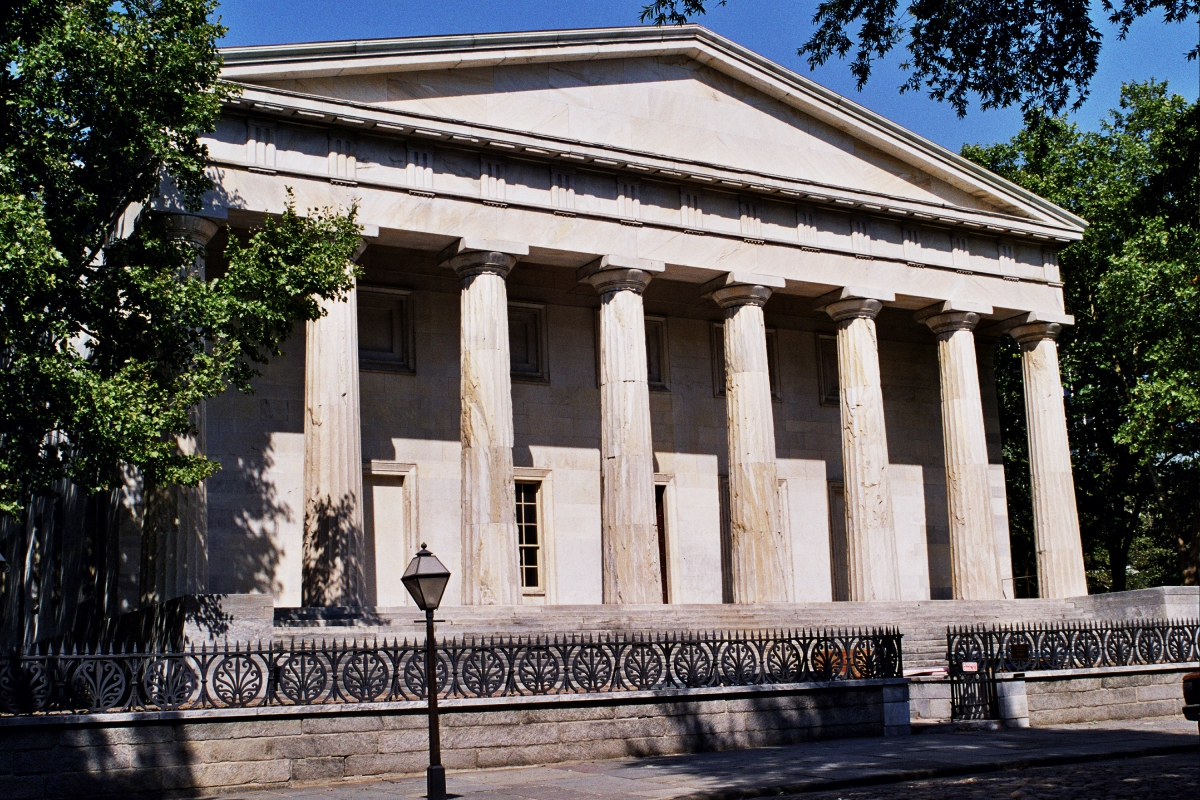
James Madison in Philadelphia
Madison spent many years in Philadelphia while Philly served as the Capital of the United States. Madison first lived in Philadelphia while a member of the Continental Congress during the Revolutionary War, and during this time, Madison worked at Independence Hall. Madison returned to Independence Hall in 1787 to help draft and sign the United States Constitution. While working on the Constitution, Madison stayed in a boarding house operated by Mrs. Mary House, located at the corner of 5th and Market Streets.
Madison again lived in Philadelphia while he served in Congress in the 1790s, when Madison lived in a house at 429 Spruce Street and worked at Congress Hall. While in Congress, Madison also met his wife Dolley, who had been recently widowed after her husband died in the 1793 Yellow Fever Epidemic. During the time of their meeting, Dolley lived in a house on 4th and Walnut Streets. Years later, while Madison was President of the United States, he chartered the Second Bank of the United States.
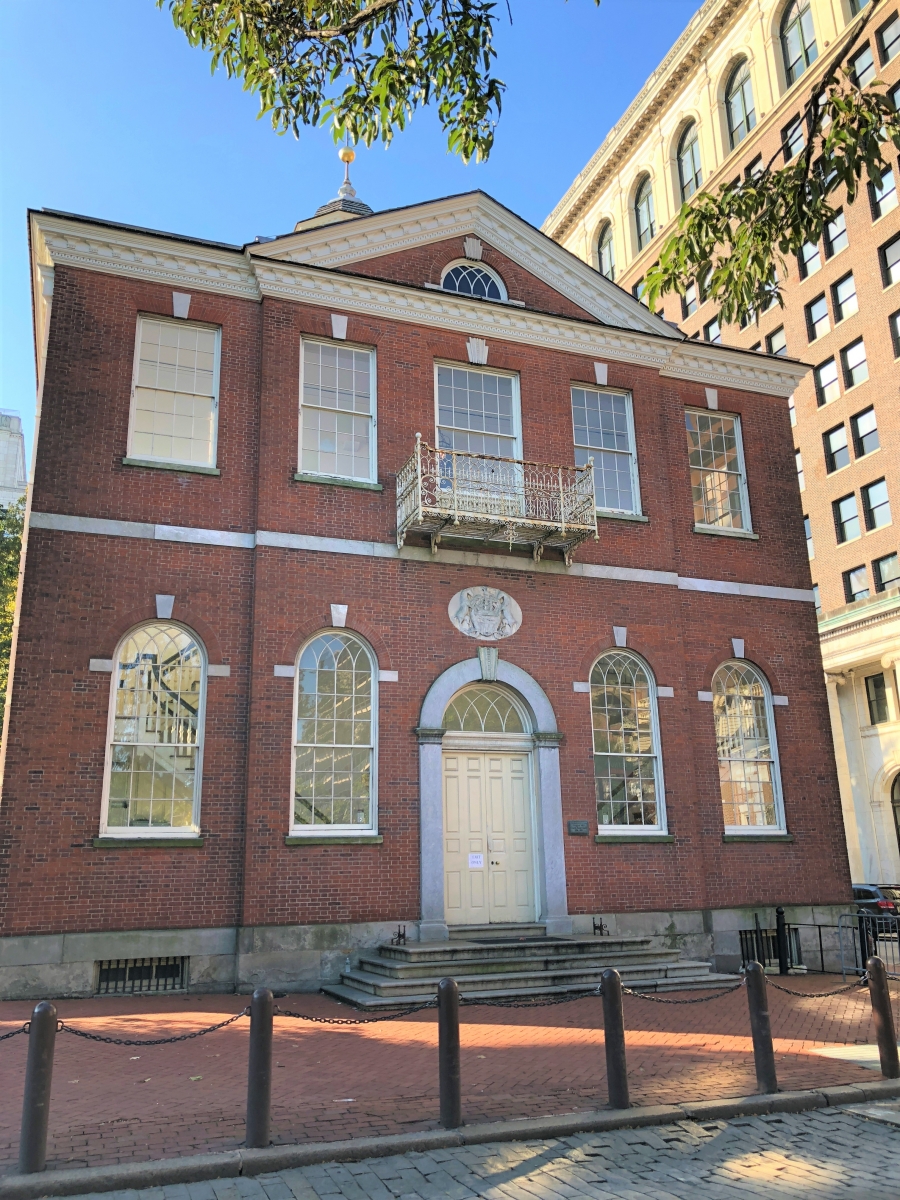
Today, you can also see a statue commemorating Madison for his role in the creation of the United States Constitution in the Signers' Hall exhibit of the
National Constitution Center. Signers' Garden pays tribute to the Founding Fathers, including those such as Madison who signed the Constitution of the United States. Today, The Second Bank of the United States, the National Constitution Center, Independence Hall and Signers' Garden are all stops visited along
The Constitutional Walking Tour!


